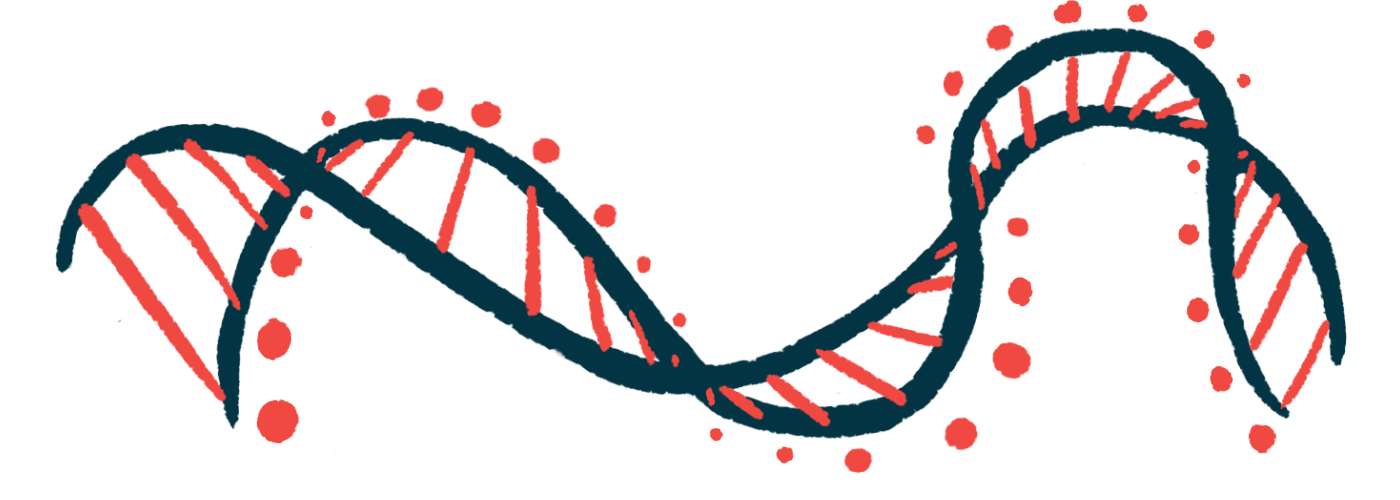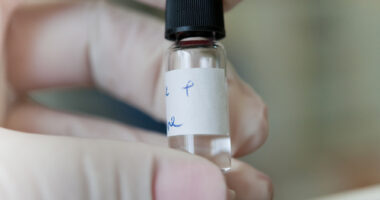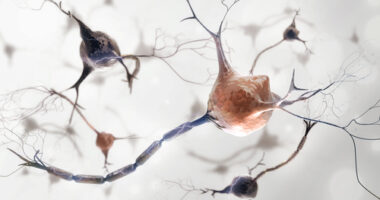NOVA1 Protein May Be Involved in Early ALS Disease Mechanisms
The RNA protein binds to alternative splicing areas in ALS samples, but not healthy controls

A protein called NOVA1 may be involved in the early disruption of protein production in amyotrophic lateral sclerosis (ALS), even before the characteristic buildup of the toxic TDP-43 protein occurs.
The finding is a step toward identifying ways to treat the disease in its earlier stages, before nerve cells are damaged beyond repair, according to researchers.
“We have made a pioneering discovery, but it is only one first step towards possibly being able to detect ALS in the early stages,” Beate Winner, MD, a professor at Friedrich-Alexander-Universität Erlangen-Nürnberg (FAU) and the study’s senior author, said in a university press release.
The study, “Aberrant NOVA1 function disrupts alternative splicing in early stages of amyotrophic lateral sclerosis,” was published in Acta Neuropathologica.
TDP-43 is a protein that modulates how genes are “read” during protein production. While it normally resides in the cells’ nucleus, where DNA is housed, it forms abnormal clumps outside the nucleus in the nerve cells of ALS patients.
“We have known for roughly 15 years that during the end stage of ALS, the protein TDP-43 found in neurons becomes insoluble and starts to form clumps,” Winner said. “It loses its normal functions and adopts toxic properties. Even though these pathological changes are not yet noticeable in patients, the fate of the nerve cells is already sealed. We wanted to know whether we could find causes for ALS at an early stage of development before the TDP-43 changes.”
Winner and her team were particularly interested in determining whether abnormal changes in a process called splicing might precede the toxic TDP-43 buildup in ALS patients, and which proteins were involved in such changes.
In the process of creating a protein from a gene, an intermediate messenger RNA molecule is produced. In its early stages, this molecule is made of exons, or regions of the genetic code that provide instructions for making a protein, interspersed with non-coding regions called introns.
Thus, before messenger RNA molecules can be used as a template for a protein’s synthesis, they must undergo a process called called RNA splicing, wherein introns are removed and exons are “glued” together to form the final protein template.
Through a tightly regulated mechanism, called alternative splicing, cells can select which exons are included in the final template, removing or adding specific exons when stringing them together. This is a normal process cells use to create distinct protein forms, some with different functions, from the same gene.
“Alternative splicing is an extremely complex and ingenious mechanism that humans use to multiply their repertoire of proteins,” Florian Krach, MD, PhD, member of the FAU team and the study’s lead author, said. “Sections of an RNA messenger molecule are either cut or added, thereby hindering, extending or changing the function of proteins altogether.”
But if this process becomes faulty, it can lead to unusual or nonfunctional forms of a protein that contribute to disease being produced.
Evidence of aberrant alternative splicing, leading to proteins being produced that are ultimately nonfunctional, has been frequently observed in tissue samples from ALS patients and is believed to be an early disease contributor.
The research team set out to discover the molecular players that lead to the abnormal alternative splicing in ALS. Using skin cells from people with ALS and healthy controls, the team created a form of stem cells called induced pluripotent stem cells, which can virtually differentiate into multiple cell types.
These stem cells were then treated with certain substances that induced their differentiation into nerve cells. Since the resulting nerve cells are derived from patients and controls, they present the same genetic mutations and protein abnormalities as their donors.
In total, the team generated motor neurons from six controls, four patients with sporadic ALS, and two familial ALS patients.
Cells from ALS patients did not yet show signs of abnormal TDP-43 buildup, but there were five RNA binding proteins, a type of protein involved in regulating splicing, that were increased in the insoluble portion of cells, suggesting they are components of protein clumps.
Of particular interest to the researchers was NOVA1, a protein that’s essential for normal function and survival of spinal cord motor neurons.
NOVA1 was found to bind to areas of alternative splicing in ALS samples, but not healthy controls. The protein appeared linked to particular “splicing signatures” in the ALS samples wherein certain exons were included or excluded during protein production, depending on NOVA1 levels and binding location.
Further experiments showed that as TDP-43 accumulates in clumps outside the nucleus, NOVA1 levels in the nucleus declined. This was observed in both cell and mouse models of TDP-43 buildup.
In postmortem spinal cord tissue from ALS patients, NOVA1 levels were similar to healthy controls in cells that had normal TDP-43 levels, but were significantly lower in cells with abnormal TDP-43, consistent with the findings in cell models.
The findings highlight that alterations to RNA-binding proteins such as NOVA1 may contribute to the early splicing alterations observed in ALS, representing a disease process occurring before TDP-43 buildup.
“Follow-up studies with larger cohorts could deepen our understanding of the importance of RNA-binding proteins,” Winner noted.







